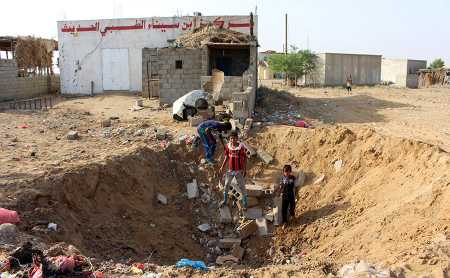U.S. Sets Major Saudi Missile Defense Sale
The Trump administration notified Congress of the largest piece thus far of the controversial $110 billion arms sale to Saudi Arabia first announced in May. The Oct. 8 notification covered 360 interceptor missiles, 44 launchers, seven radars, related components, and support for the Terminal High Altitude Area Defense (THAAD) system, with an estimated value of $15 billion. Aimed at intercepting short- and medium-range ballistic missiles, the THAAD system would support the “long-term security of Saudi Arabia and the Gulf region in the face of Iranian and other regional threats,” according to the notification. The notification came just days after reports that Riyadh had agreed to buy Russian S-400s, a mobile surface-to-air missile system, calling into question whether the Saudis are playing Russia and the United States against each other.

 U.S. military sales to Saudi Arabia have drawn extra attention due to the Saudi-led coalition’s conduct of its war in Yemen, which has resulted in many direct and indirect civilian casualties. Saudi Arabia and its allies have prevented ships carrying humanitarian aid from reaching Yemeni ports. Sen. Todd Young (R-Ind.), who voted in June to block the sale of $500 million in precision-guided munitions to the Saudis, threatened to block the nomination of Jennifer Newstead as legal adviser in the State Department. During confirmation hearings, Young pressed Newstead on the Saudi actions in Yemen. Young said that the Saudi obstruction of humanitarian aid violates Rule 55 of customary international humanitarian law (as listed by the International Committee of the Red Cross) and undercuts “our national security interests and our moral values.”
U.S. military sales to Saudi Arabia have drawn extra attention due to the Saudi-led coalition’s conduct of its war in Yemen, which has resulted in many direct and indirect civilian casualties. Saudi Arabia and its allies have prevented ships carrying humanitarian aid from reaching Yemeni ports. Sen. Todd Young (R-Ind.), who voted in June to block the sale of $500 million in precision-guided munitions to the Saudis, threatened to block the nomination of Jennifer Newstead as legal adviser in the State Department. During confirmation hearings, Young pressed Newstead on the Saudi actions in Yemen. Young said that the Saudi obstruction of humanitarian aid violates Rule 55 of customary international humanitarian law (as listed by the International Committee of the Red Cross) and undercuts “our national security interests and our moral values.”